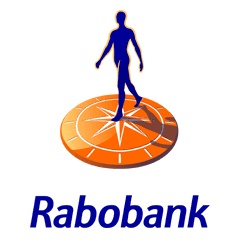Rabobank: Affordability gap continues to widen between owner-occupied sector and private rental sector
Housing Market Quarterly
On the Dutch housing market the affordability between owner-occupied homes and homes in the private rental sector continues to grow further apart. This is affecting renters in the private segment twice over. Not only are they paying high rents and therefore have little to save, but because they cannot save much they find it increasingly difficult to get on the property ladder as house prices keep rising. The result is that they are more likely to keep living in a house that is no longer suited to their situation. And it would appear that the new government’s housing market policy will bring about little change here. These are the views of economists at Rabobank in their Dutch Housing Market Quarterly which is published today.
The third quarter of this year saw yet another record broken on the Dutch housing market. Rabobank economist Christian Lennartz explains: ’It was rather a crazy quarter. Never have so many houses been sold as in the three summer months; well over 61,000. But we are seeing a divergence between the Randstad and the rest of the country; in Zuid-Holland the number of sales flatlined, while in the provinces of Utrecht and Noord-Holland transactions even fell quite significantly. This trend may be signalling a turnaround.’
The Rabobank economists expect that around 240,000 houses will be sold this year and that this number will fall next year to around 225,000 transactions. Lennartz: ’During the last quarter not only the share, but also the actual number of young home buyers fell, while the number of investors buying a second or third house, or even more, is rising. Unlike first-time buyers, they have more financial elbow room and so hold the best cards when making an offer on a house.’
House prices to rise by 7% in 2018
Since demand for owner-occupied homes is not falling appreciably, prices will continue to rise strongly in the coming year. Lennartz expects a price rise of 7% in 2018. ’As already said, there is a wide gulf between the affordability of owner-occupied homes and rented homes, especially those in the private rental sector. Housing costs in the owner-occupied housing sector make up on average 30% of disposable household income, whereas in the private rental sector this is more than 40%. Confidence is also strong in the owner-occupied housing market and interest rates will stay low for the time being. This is keeping demand for owner-occupied homes high as long as not enough (rental) homes are being built.”
The situation on the Dutch housing market will not change significantly in the short-term, the Rabobank economist believes. ’We don’t expect the new government’s proposed housing policy to have a major impact on the price of owner-occupied homes. The widening gulf in affordability between homes to buy and homes to rent in the private sector will therefore not be reversed soon. This means that, despite the restrictions on mortgage interest relief, market conditions will continue to favour those owning their own home.’
The Dutch Housing Market Quarterly can be found at: www.rabobank.com/economics
( Press Release Image: https://photos.webwire.com/prmedia/6/216649/216649-1.png )
WebWireID216649
This news content was configured by WebWire editorial staff. Linking is permitted.
News Release Distribution and Press Release Distribution Services Provided by WebWire.
